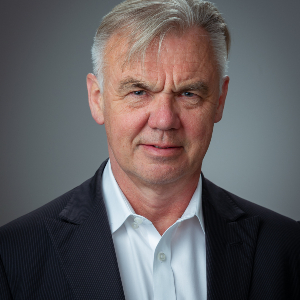ESC Paul Hugenholtz Lecture in Innovation: Prof. John Webb
What will we do when transcatheter aortic valves fail?
25 Aug 2023The presenter of this year’s ESC Paul Hugenholtz Lecture in Innovation, Professor John Webb (St Paul's Hospital - Vancouver, Canada), leads the group that developed and first performed several of the most widely used transcatheter aortic, mitral, tricuspid and pulmonary valve procedures.
What first made you interested in cardiology?
One of the main aspects that initially appealed to me about cardiology was that, on the surface of it, the heart appears to be relatively simple in terms of its structure and its function. Working in the field I became more and more interested in the mechanisms of cardiac function, the tools we have to measure it and how the information generated can be used to assess and monitor cardiac disease. Something I find particularly rewarding about cardiology is its immediacy – there are many heart diseases where we can intervene and see a dramatic beneficial effect.
What are the key themes of your lecture?
After two decades of experience, transcatheter aortic valve implantation (TAVI) is now a well-established procedure. However, we’re seeing a shift in the profile of patients treated and this calls for a rethink of our approach. TAVI is now being used increasingly in younger patients, who are good surgical candidates, and the issue is becoming one of longevity and lifetime management. Valve durability is going to be a problem over the extended lifetimes of these younger patients and innovative solutions are required to understand how best to treat patients when their valves eventually fail. There are issues around the type of procedure, such as the feasibility of repeating the original procedure and the acceptability of valve-in-valve replacements. We also need to identify which valves are the most appropriate for repeat procedures and to address considerations including coronary access, valvular function and thrombus formation.
I think that planning, both procedural and valve-related, will be vital in the future management of younger patients. For each patient, we need to determine a proposal for TAVI replacement should it be required. And this leads into a debate about the relative scheduling of TAVI and surgery and about the type of procedure best suited to the patient’s needs – what should happen first, TAVI or surgery? And if surgery, what type of subsequent TAVI? And if TAVI, what type of TAVI? The process is likely to involve routine imaging to determine the most appropriate valve for an individual at initial implantation and at the potential subsequent point of failure.
What are the current challenges in your field?
The TAVI procedure has become very sophisticated and somewhat routine. Although we have seen outcomes improve dramatically over the years, they still vary from operator to operator, site to site and country to country. So, there is still considerable room for improvement. However, this is really a problem of high-income countries. A more pressing challenge right now concerns the wider accessibility of TAVI. The cost of prosthetic valves and the relative scarcity of experienced TAVI operators outside high-income countries limits the use of this procedure in many areas. Efforts need to be made to enable greater access to this procedure so that it can benefit more patients on a global scale.
Where do you think research in your field is heading in the future?
I think that there is fairly ambitious ongoing research looking at improving the durability of valves and in making the procedure more efficient and cost-effective, and therefore more widely accessible. However, considerably more research is needed regarding the design and implantation of valves that are suitable for repeatable procedures in patients whose valves fail. One area of particular interest at the moment concerns the identification of valves most appropriate for valve-in-valve TAVIs. This is a very complicated clinical procedure and the use of novel modelling techniques may help to provide a solution.



